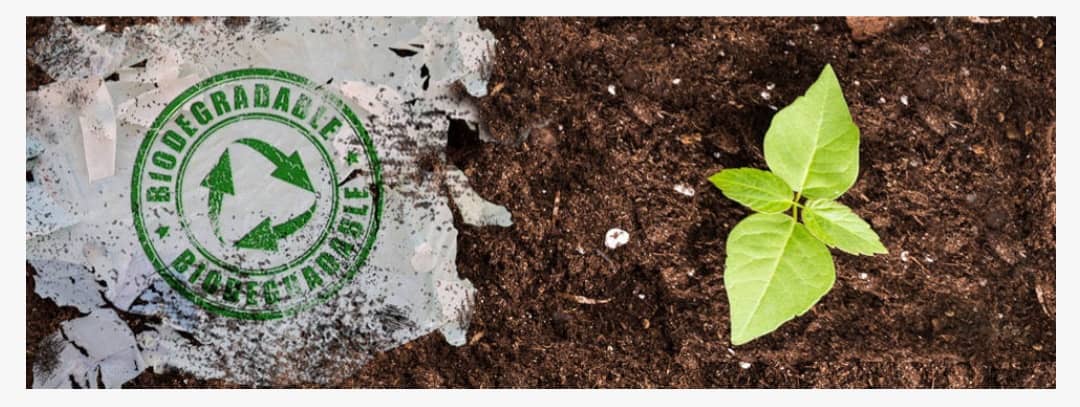Since small pieces of ordinary and traditional plastic threaten natural ecosystems, with the production of biodegradable plastic, no more harmful effects on the environment can be observed. This type of plastic is made from renewable resources that remain in the environment for a shorter period of time and does not contain any chemicals or toxins. Having this feature increases the production of bioplastics day by day and fortunately, it is becoming a common option on store shelves.
Buy biodegradable plastic
Considering the increasing importance of biodegradable plastic, you should consider some things before buying. In other words, by observing the following points, you can buy your product more confidently and help preserve the environment.
- Before buying, carefully check the ingredients list of the product, which is made from natural ingredients such as starch, corn, cane sugar and polylactic acid.
- Make sure that the plastic you buy does not contain harmful or toxic chemicals.
- Pay attention to the product maintenance instructions; Because some of them decompose better in certain conditions such as high humidity or high temperature.
- Biodegradable plastics are typically more expensive than conventional plastics; So determine your budget before buying.
- Since these types of plastics are not suitable for all applications, before choosing the application you want, buy the one that is suitable for it.
- The decomposition time of each type of biodegradable plastic is different, so before buying bioplastic, get information about it from the seller or on the packaging.
The price of biodegradable plastic
The price of biodegradable plastic depends on its ingredients and quality. Of course, this product is not available in all stores; That’s why you might have a little trouble finding it. In this regard, we recommend the Ghasil Kala Shargh site to you. All the products of this center are offered to the customers with the best quality and the right price, and you can easily get your product in the shortest possible time and with the right packaging.
Use of biodegradable plastic
The structure of biodegradable plastic is designed in such a way that in certain environmental conditions, they are decomposed by microorganisms and have many applications, the most important of which are the following:
- Medical industry
Degradable polymers have many applications in the field of medicine. For example, in order to prevent infection, plastics are used to cover medical devices and devices. These types of plastics, which are made of high-thickness polyethylene, cannot be torn or damaged. Also, these materials are used in various surgeries and treatments, production of sutures and disposable medical devices due to their compatibility with the body and their ability to be absorbed.
- Food packaging
One of the most widely used areas of using biodegradable plastic is the production of disposable packaging for food, knives, forks and restaurant dishes. This product is the best option for reducing plastic waste due to its rapid decomposition.
- agriculture
The polymer structure of these types of plastics prevents damage to the environment and is used in the agricultural industry to produce nylon for irrigation, nylon for the roof of greenhouses, and protective coating for products that return to the soil after the end of their life and act as fertilizer.
- Construction and automobile industry
In the construction industry, biodegradable plastic is used to produce sound and thermal insulation, some building materials and irrigation pipes. In the automotive industry, this product is also used in seat covers, decorative covers and the production of some interior parts of the car.
Biodegradable plastic factory
Biodegradable plastic is produced from natural or synthetic polymers and has different types, which include:
- Starch: It is the most common type of bioplastic found in corn, potato, cassava, and others, and its viability is due to the oxygen atoms in its structure.
- Polyhydroxyalkanoate: This material is one of the categories of biodegradable plastics that are produced by very small bacterial organisms and have good mechanical properties.
- Polylactic acid: Polylactic acid materials are obtained from renewable biomass such as corn pulp, sugar cane, sugar beet and are used in the production of disposable containers and food packaging.
- Polyvinyl alcohol: It is one of the few biodegradable vinyl polymers that can dissolve in water. It is used in different areas such as fabric and paper covering, medical products and food packaging.
- Polybutylene succinate: This material is a type of thermoplastic polymer resin that is used in the field of agriculture and cosmetics.
- Polycaprolactone: Hydrolysis in this material causes the emergence of biodegradable properties, which will be of special importance as a cultivable biological material.
- Polyglycolic acid: Another biodegradable polymer used in the production of medical products.
- Petroleum based plastics: These types of plastics are derived from petroleum chemicals and their main source is fossil crude oil, coal and natural gas.
- Lignin-based polymer compounds: It is considered a natural polymer that can be renewed in the environment, and 50 million chemical pulps of this material are produced annually. Practical, light weight and can adapt well to the surrounding environment.
Advantages of producing biodegradable plastic
Considering that buying biodegradable plastic has replaced traditional plastics and they have the ability to decompose in the environment, the optimal use of this type of plastic and knowing its benefits will be an important step towards protecting natural resources. In this section, we will examine the advantages of producing these types of plastics.
- Reducing environmental pollution
Biodegradable plastics break down very quickly and turn into natural compounds, which prevents the accumulation of waste. In addition, these types of plastics do not turn into microplastic particles over time and are not harmful to human health and the environment.
- Reducing energy and oil consumption
The production of this type of plastic requires 65% less energy compared to traditional plastic with the same quantity and quality. Since biodegradable plastics do not require complex technologies and burning of fossil fuels; Therefore, more plastics can be produced using the same energy. At the same time, this process causes less pollution in the environment.
- Less time in decomposition
Traditional plastics take more than 100 years to degrade and decompose after being thrown away; While these types of plastics use alternative materials or specialized enzymes to break down their contents, which are destroyed much faster.
- No release of chemicals or toxins
Common plastics contain carbon, chemical compounds, methane and other pollutants that return to the environment when recycled or burned, and this process affects people’s health; But biodegradable plastic does not contain any chemicals or toxins.
- Convenient and easy recycling
These types of plastics can be easily recycled and prevent the increase in the number of wastes and emission of greenhouse gases in the environment. The net carbon saving for recycling will be 30%, and if you turn to these biodegradable plastics, this saving will undoubtedly reach 80%.




